Table of Contents
ToggleFor high-income earners, tax season can feel like an unwanted visit from a distant relative—awkward and full of surprises. But what if it didn’t have to be that way? With the right tax-saving strategies, they can turn that frown upside down and keep more of their hard-earned cash in their pockets.
Navigating the labyrinth of tax laws may seem daunting, but it’s not rocket science. Armed with the right tactics, they can outsmart the taxman and make their money work harder for them. From maximizing deductions to exploring investment opportunities, these strategies can help high-income earners turn tax time from a dreaded chore into a savvy financial move. So grab a coffee and get ready to dive into the world of tax savings—because who said saving money couldn’t be fun?
Overview of Tax Saving Strategies for High-Income Earners
High-income earners can implement several effective strategies to reduce their tax burden. Maximizing contributions to retirement accounts plays a crucial role. Individuals can allocate funds to 401(k) or IRA accounts, providing tax-deferred growth and reducing taxable income.
Investing in tax-efficient vehicles is another strategy. Municipal bonds, for example, offer interest that typically remains exempt from federal taxes. They enhance tax efficiency, contributing to overall financial health.
Utilizing itemized deductions also proves beneficial. High-income earners can deduct expenses such as mortgage interest, medical costs, and charitable contributions, resulting in a lower taxable income.
Exploring tax credits offers an additional layer of savings. Available credits, including the Child Tax Credit or Education Credits, directly reduce the tax owed, maximizing financial benefits.
Incorporating tax-loss harvesting assists in offsetting capital gains. By selling underperforming investments and utilizing losses, they can lower their overall tax liability effectively.
Additionally, establishing a Health Savings Account (HSA) can shield funds from taxation. Contributions to HSAs offer triple tax advantages: tax-deductible contributions, tax-free growth, and tax-free withdrawals for qualified medical expenses.
Considering a flexible spending account (FSA) is another practical approach. These accounts allow individuals to use pre-tax income for qualified medical expenses, further reducing taxable income.
Incorporating a diversified investment strategy secures tax advantages long-term. By balancing investments across various assets, they position themselves for potential tax benefits from different income streams.
Maximizing Retirement Contributions

High-income earners can significantly reduce taxable income by maximizing retirement contributions. Utilizing accounts like 401(k)s and IRAs offers considerable tax advantages.
401(k) and IRAs
Contributing to a 401(k) allows employees to defer taxes on their income until withdrawal. The annual maximum contribution for 2023 is $22,500, or $30,000 for those aged 50 and over. Employers may match contributions, amplifying savings without any extra cost. Traditional IRAs also provide tax deductions; the contribution limit for 2023 is $6,500, or $7,500 for individuals aged 50 and older. Tax-deferred growth maximizes investment returns, making these accounts vital for high-income earners.
Health Savings Accounts (HSAs)
Health Savings Accounts (HSAs) present a powerful tax-saving method. Contributions to HSAs are tax-deductible, and funds grow tax-free if used for qualifying medical expenses. For 2023, individuals can contribute up to $3,850, while families can contribute up to $7,750. Contributions after the age of 55 allow an extra catch-up contribution of $1,000. The triple tax advantage—tax-deductible contributions, tax-free growth, and tax-free withdrawals—makes HSAs a smart choice for high-income earners looking to save on taxes.
Utilizing Tax Deductions and Credits
High-income earners can significantly reduce their tax burdens by strategically utilizing various tax deductions and credits.
Itemized Deductions
Itemized deductions allow taxpayers to deduct specific expenses from their taxable income. Common examples include mortgage interest, property taxes, and unreimbursed medical expenses. Taxpayers choose this method when their total deductions exceed the standard deduction amount. Charitable contributions also qualify for itemization, offering additional savings opportunities. Keeping meticulous records of all expenses ensures that no deduction goes unclaimed.
Tax Credits for High-Income Earners
Tax credits directly reduce the amount of tax owed, making them highly beneficial. High-income earners can qualify for several credits, including the Child Tax Credit and the Lifetime Learning Credit. Understanding eligibility criteria is crucial for maximizing these credits. Certain business credits can benefit those who own successful ventures. Additionally, some energy-efficient home improvements may qualify for tax credits, further lowering tax liabilities. Exploring available options enables high-income earners to optimize tax savings effectively.
Investment Strategies for Tax Efficiency
High-income earners can adopt various investment strategies to enhance tax efficiency. Focusing on tax-deferred accounts primarily benefits those aiming to lower taxable income while investing for retirement.
Tax-Deferred Accounts
Utilizing tax-deferred accounts allows high-income earners to postpone tax payments on contributions and earnings. Contributing to a 401(k) or traditional IRA provides these individuals with opportunities for significant tax savings. The maximum contribution limit for 401(k)s is $22,500 in 2023, while individuals aged 50 and older may contribute up to $30,000. Traditional IRAs offer similar advantages with contributions capped at $6,500, and $7,500 for those 50 or older. Such strategies effectively reduce taxable income, enabling account holders to grow their investments while deferring tax liabilities until withdrawal.
Tax-Loss Harvesting
Tax-loss harvesting provides an effective method for managing capital gains and leveraging tax benefits. Investors can sell underperforming assets to realize losses that offset gains from other investments. Specifically, this strategy allows taxpayers to deduct a maximum of $3,000 in net capital losses against ordinary income, which directly lowers tax obligations. Monitoring investment performance throughout the year ensures timely decisions that maximize tax benefits. Using tax-loss harvesting allows high-income earners to optimize portfolios while minimizing tax impacts.
Charitable Contributions and Philanthropy
Charitable contributions offer high-income earners a valuable avenue for reducing taxable income. Donating cash or property to qualified organizations enables these individuals to claim deductions on their tax returns. The IRS allows taxpayers to deduct contributions up to 60% of their adjusted gross income (AGI) for cash donations, depending on the type of charity.
Utilizing Donor-Advised Funds (DAFs) can also enhance tax efficiency. DAFs allow individuals to make contributions to the fund, receive an immediate tax deduction, and recommend grants to charities over time. Establishing a DAF provides both philanthropic flexibility and potential investment growth.
In addition, appreciating assets such as stocks make excellent charitable contributions. Donating investments that have increased in value helps avoid capital gains taxes while still achieving a charitable deduction for the fair market value of the asset. This strategy effectively maximizes the tax benefits of philanthropy.
Engaging in charitable giving through foundations offers more strategic benefits. Private foundations allow high-income earners to direct their philanthropic efforts while enjoying significant tax advantages. Contributions made to foundations qualify for deductions up to 30% of AGI, creating further opportunities for tax savings.
Planned giving strategies also provide high-income earners with additional ways to leverage their charitable interests. Options like charitable remainder trusts or charitable lead trusts can generate income while providing immediate tax deductions. Such strategies promote long-term philanthropic goals, ensuring financial benefits for both donors and charities.
High-income earners should consider the timing of their charitable contributions to optimize tax savings. Donating in years with higher income can result in larger deductions. This approach helps to align charitable efforts with personal tax circumstances, ensuring maximum benefit.
High-income earners have the opportunity to transform their tax experience from daunting to rewarding. By implementing effective tax-saving strategies they can significantly reduce their tax liabilities and keep more of their hard-earned income.
From maximizing retirement contributions to exploring tax-efficient investments and charitable giving options every strategy offers distinct advantages. Staying informed about deductions and credits can further enhance tax efficiency.
With careful planning and a proactive approach high-income earners can navigate tax season with confidence and ease. Embracing these strategies not only optimizes financial outcomes but also fosters a more positive perspective on tax obligations.



